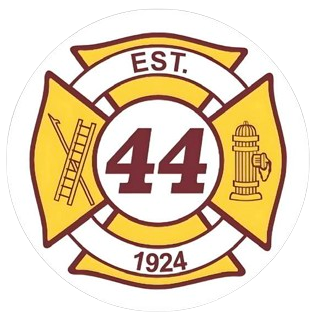Fire Prevention
Fire Prevention Tips
Fire protection
Install smoke alarms on every level of your home, including the basement, and outside each sleeping area. If you sleep with the door closed, install one inside your sleeping area as well. Install one fire extinguisher per floor at minimum.
Test alarms every month and replace batteries once a year, or whenever an alarm “chirps” to signal low battery power.
Kitchen safety
Never leave a stove in use unattended. Keep cooking areas clear of combustibles. If grease catches fire in a pan, slide a lid over the pan to smother the flames and turn off the heat source. Leave the lid on until the pan is completely cool. NEVER use water on a grease fire, apply baking soda or a “K” rated fire extinguisher.
Heating Saftey
Keep portable heaters and space heaters at least three feet away from anything that can burn. Keep children and pets away from heaters, and turn them off when you leave home or go to sleep.
For fireplaces, have your chimney inspected and cleaned yearly by a licenses professional. Do not burn paper in your fireplace. Put the fire out before you go to sleep or leave the house. Lastly, put ashes in a metal container with a lid and store the ashes outside at least 10 feet from your home.
Electricity Saftey
If an electric appliance smokes or has an unusual smell, unplug it immediately, then have it serviced before using it again. Replace any electrical cord that is cracked or frayed. Plug only one electrical cord into each receptacle. Avoid running any cords under rugs. Don’t tamper with your fuse box or use improper-size fuses. Never “daisy-chain” multiple power strips or cords. Do not leave charging appliances unattended.
Keep an eye on smokers
Careless smoking can lead to fires. Smoking in bed or when you are drowsy could be fatal. Provide smokers with large, deep, non-tip ashtrays, and soak butts with water before discarding them. Before going to sleep or leaving home after someone has been smoking, check under cushions and around upholstered furniture for smoldering cigarettes.
Remember: matches and lighters are tools, for adults only!
Use only child-resistant lighters and store all matches and lighters up high, where kids can’t see or reach them, preferably in locked cabinet. Teach children that matches and lighters are tools, for grown-ups only. Teach young children to tell a grown-up if they find matches or lighters; older children should bring matches and lighters to an adult immediately.
Plan your escape from fire
If a fire occurs in your home, you have to get out fast. Sit down with your family and work out an escape plan in advance. Be sure that everyone knows at least two unobstructed exits – including windows – from every room. (If you live in an apartment building, use the stairs, not the elevator to escape from fire.) Decide on a meeting place outside. Have your entire household practice your escape plan at least twice a year.
Crawl low under smoke
If you encounter smoke while you are escaping from a fire, use an alternative escape route. If you must escape through smoke, crawl on your hands and knees, keeping your head 12 to 24 inches above the floor, where the air will be cleaner.
Stop, drop, and roll
If your clothes catch fire, don’t run. Stop where you are, drop to the ground, cover your face with your hands, and roll over and over to smother the flames. Cool the burn with water and call for help.
Cool a burn
Run cool water over a burn for 10 to 15 minutes. Never apply ice. Never put butter or any other type of grease on a burn. If the burned skin blisters or is charred, see a doctor immediately.
